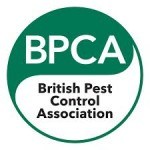There are hundreds of different species of Bees in the UK, all of which may require different treatment methods. Below is some information about the most common species you may encounter:
Bumblebees
They aren't easily confused with any other bee. They are rounder, larger and furrier and come with a variety of coloured stripes across the end of their tails. Nesting sites are normally found underground in abandoned burrows, bird boxes, under the decking, or in the compost bin.
Bumblebees are social insects: they live in a colony with a queen and her daughters (the workers). Bumblebees have an annual lifecycle, with new nests being started each spring by queens. The queen bumblebees are very large, and from February onwards can be seen feeding on flowers such as willow catkins, bluebells and lungwort, or flying low over the ground searching for a nest site.
Some species prefer to nest underground in abandoned burrows of rodents, while others nest just above the ground in dense grass or leaf-litter. The queen stocks her nest with pollen and nectar, and lays her first batch of eggs. She incubates them much as a bird would, sitting on the eggs while shivering her flight muscles to produce warmth.
When the eggs hatch the legless grubs consume pollen and nectar, grow rapidly, and pupate after a few weeks. A few days later the first workers hatch from their pupae and begin helping their mother, expanding the nest and gathering food. By mid-summer nests of some species can contain several hundred workers. At this point the queen starts laying both male and female eggs.
The females are fed extra food and become future queens. Both males and new queens leave the nest to mate, and the new queens burrow into the ground to wait until the following spring. The males, workers, and the old queen die off in the autumn, leaving the nest to decay.
Tree bees
A recent addition to the UK's fauna. Their banding is unique amongst the UK species. The thorax is tawny to redd
ish brown, the abdomen is black and tail is white. Fresh drones have a patch of yellowish facial fur, but this wears off with time. Queens vary significantly in size, and workers are normally quite small.
Some traits of tree bees can be a cause of concern, but there is nothing to worry about. Commonly they establish a nest in bird boxes, or in parts of buildings, and may cause concern through apparent high level of nest flight activity due to ‘nest surveillance' by drones, and the sound of bee chatter/activity heard through the ceiling are all signs of activity.
Solitary/Masonry bees
As the name suggests, they are solitary insects, and you'll rarely find them occurring in large numbers. They have a reddish-brown bottom and black body. You'll see these small bees popping in and out of the wall or very small holes in the ground.
They nest in a wide range of cavities and have the ability to build nests by tunnelling through soft brick mortar, or exploiting pre-existing gaps left unrepaired. They do not cause a problem to your property from a structural point of view.
Honeybees
Providers of honey and almost universally viewed with affection in the UK. They rarely present problems as pests, however, feral swarms can set up home in undesirable places such as chimneys and wall cavities. Honey bees are small and vary in colour from golden brown to almost black.
The most common scenario in which you may become concerned is when they swarm. Typically these intimidating swarms will first set up a temporary camp somewhere nearby, such as a tree branch, fence post and even cars. In almost all cases the swarm will take off again within a day or two to occupy a most suitable permanent home elsewhere.
How to cope with bees and whats the legal situation
Contrary to popular belief bees are not protected and can be treated, however they are endangered so we'd always recommend exploring all other avenues before considering eradication. Below is a step by step guide to assist you:
- Leave them alone - Bees don't cause any problems to your property, and nor are you in danger of being stung if they are left alone and unprovoked. After the summer season the bees will go away and not return to the nesting site the following year. By the time a colony has become obvious its activity will be about to decline naturally. Generally, colonies formed in spring usually decline naturally by late July, if not sooner. Therefore If at all possible always bee nests alone to thrive as their presence is actually beneficial for gardeners and their crops.
- Relocation - If a nest is outside or underground then there shouldn't be a reason to really move it. In more conventional and accessible places such as bushes, trees and sheds, then contact us. If you suspect you have honeybees and they are causing you problems then contact us for advice . Only if the location of a nest is dangerous and removal not possible, should the next step be an option.
- Eradication - The decision to treat will depend if it is possible to close the entrance(s) to the nest after treatment. In this circumstance make sure you use a trained professional. We strongly recommend you contact a professional pest control company, preferably a member of the BPCA. A trained professional will have the technical knowledge and access to a range of professional use insecticides which are not available to the public. Post treatment requirements will vary depending on the species of bees you have. For bumblebees and tree bees, blocking up access points will prevent non-target bees from entering and getting contaminated, as well as shortening the likelihood of other bees accessing the same area in the future.For solitary/masonry bees, in the long term, re-pointing with sound mortar is the only answer. However, this must be thorough as bees hunting for a nest site will soon locate areas that have been missed.For honey bees, it is essential that entrance points or blocked off, and if possible remove all the honeycomb. Failure to do this will cause robber bees to find the infected honey and take it back to their hive, thus contaminating it.
For this honey bee removal we used a cherry picker to remove the entire chimney pot. We then transferred the bees to a hive. The picture shows the upside chimney pot with the comb exposed.
As beekeepers ourselves we try where possible to relocate bees unfortunately it isn't always possible if a treatment is required we will provide a service which provides an effective solution without risking other local colonies.
Please call us to discuss your needs on 0121 364 7000.







